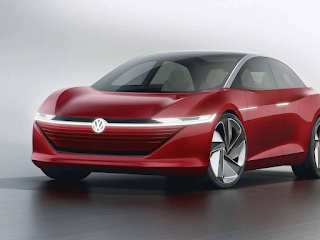The new hydrogen car that travels 2,000 kilometers with a single tank. Volkswagen is working on a new fuel cell that is much cheaper than th...
Volkswagen is working on a new fuel cell that is much cheaper than the current ones and promises hydrogen cars that can travel 2,000 kilometers on a single tank.
Volkswagen has just applied for the registration of a patent for a new hydrogen fuel cell that, in addition to being cheaper than the current ones , will be able, according to its creators, to give cars a range of up to 2,000 kilometers without refueling.
This news represents a turn in the position that Volkswagen usually shows regarding hydrogen. Like Elon Musk does every time he has the opportunity, the German manufacturer’s CEO, Herbert Diess, denied the potential of hydrogen as a power source for electric cars in a tweet published in May 2022.
Herbert Diess, CEO, said:
It has been shown that the Hydrogen car is not the solution to climate problem.
“In transport, electrification has taken over. Fake debates are a waste of time. Please listen to the science.”
The patent application for this new fuel cell, carried out together with the German company Kraftwerk Tubes, shows that Volkswagen does not want to lose the hydrogen train and works outside the public eye in the development of this technology.
How does it work
The huge batteries of electric cars are accumulators of electricity that is released according to the needs of the vehicle. Hydrogen fuel cells, by contrast, are capable of generating their own electricity.
For this they need a high-pressure tank that stores the hydrogen in gas form —if it were liquid it would need to be stored at very low temperatures— and a fuel cell that converts hydrogen into electricity.
Fuel cells also have an anode and a cathode like batteries. Hydrogen enters through the anode and passes through an electrolyte membrane which is responsible for dividing hydrogen (H2) into a proton (H+) and an electron (e-). An electrolyte then causes them to take different paths to the cathode.
The electrons go through an external circuit creating a flow of electricity—which is what makes the car’s engine work—while the protons pass through the electrolyte to the cathode. There they unite with oxygen, which enters directly to the cathode, and with the electron, producing water and heat. However, Volkswagen and Kraftwerk’s fuel cell puts a spin on materials traditionally used for membranes.














No comments
Thanks